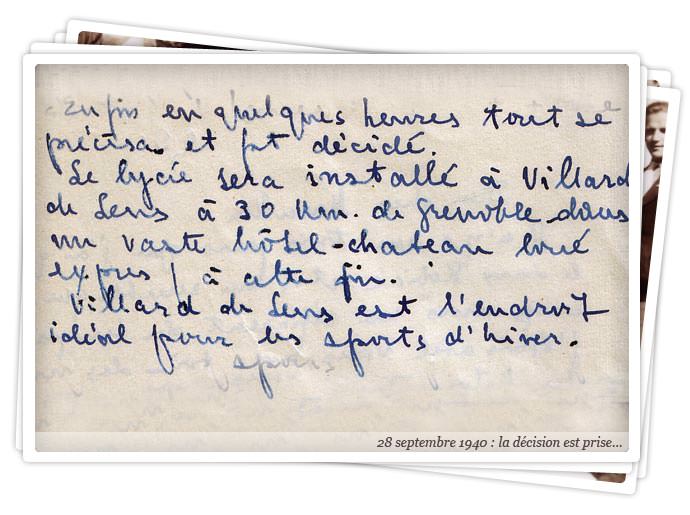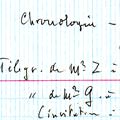Origins
The first Polish secondary school in France was founded in Paris by Polish immigrants in 1842. It was later renamed the “Batignolles” school and was in use until 1922.

In 1928, the Association of Polish Teachers in France floated the idea of opening another high school, but the project was not followed through.
The Pallottine Fathers, who were very actively involved with the immigrant population, picked up on the idea.
In 1937, the very energetic Father Franciszek Cegielka, a young and excellent organiser and member of the Pallottine Order, was appointed to lead the Polish Catholic Mission in France. With his enthusiastic support, the idea of a Polish high school became a reality in Amiens, in a region hosting a strong immigrant community. By June 1939, sixty pupils had enrolled for the first term, due to start in the autumn. However, the German invasion and related events decreed otherwise, and the Amiens High School ceased to exist before it had even opened.
Father Cegielka became a bishop. Instead of Amiens, his school would be in Paris, and in the autumn of 1939, the Cyprian Norwid Polish High School opened its doors. Its first location was 14, Rue de Fleurus, but it later moved to the annex of Fenelon High School at 13, Rue de la Suger. It had up to four hundred pupils.
1940… The Germans had reached the outskirts of Paris. At the beginning of June, all pupils other than those in their final year, were evacuated initially to the Pyrenees region and then once the Armistice had been signed, to Great Britain. The final year pupils sat their oral exams, were awarded their certificates and retreated to Angers, which at the time was the seat of the Polish government in exile, before moving on to Great Britain.
The idea of founding a new and better Polish High School in the ‘zone libre’, the area of southern France not occupied by the Germans, was soon mentioned. Zygmunt Lubicz-Zaleski, as the Polish Ministry of State Education’s representative in France, had previously been responsible for supervising the old high school, and became the kingpin of the project to found a new one, helped by his longstanding friend Wenceslas Godlewski, a Polish language assistant at the University of Lille.
The principle of a new high school was accepted, but it would keep the name of the old one.
Where best to build this new school?
The Pyrenees and Toulouse, where Zygmunt Lubicz-Zaleski had lived for a time, were an appealing solution. The border with Spain was close by, and Spain was a gateway to Portugal, the Atlantic Ocean and the open seas to England and the United States. However, Spain also meant Franco and a hostile regime.
So instead, attention turned to the region around Grenoble, a university town already home to a number of Polish students. Some of them were demobilised soldiers who had sought refuge in Grenoble after their many wanderings, while others were members of the pre-war intelligentsia and Warsaw elite; former ministers, ambassadors, high-ranking officials, magistrates and artists, who had also found shelter in the town… Grenoble was also the Préfecture (main administrative seat) of the Isere, a department that had long attracted large numbers of Polish immigrants.
Last but not least, Grenoble also had the advantage of being close to the very neutral and liberal country of Switzerland.
The next step was to find a small centre that wouldn’t attract too much attention but that had plenty of hotels that could be used for boarding accommodation.
Zygmunt Lubicz-Zaleski asked Wenceslas Godlewski to find a suitable site.
After carefully examining the resorts overlooking Grenoble, the Vercors and Villard-de-Lans were chosen. Godlewski wrote, “I went to Villard yesterday. It’s beautiful – the setting, hotels, climate and sports fields. I have high hopes…” Moreover, the local shopkeepers assured him that they would “do their best” to ensure food supplies.
And so, in October 1940 the Cyprian Norwid Polish High School settled into its new home between Cornafion and Moucherolle, at the foot of the Silver Mountains (“Srebrne Gory”), the name given by the Poles to the Arêtes du Gerbier.

















